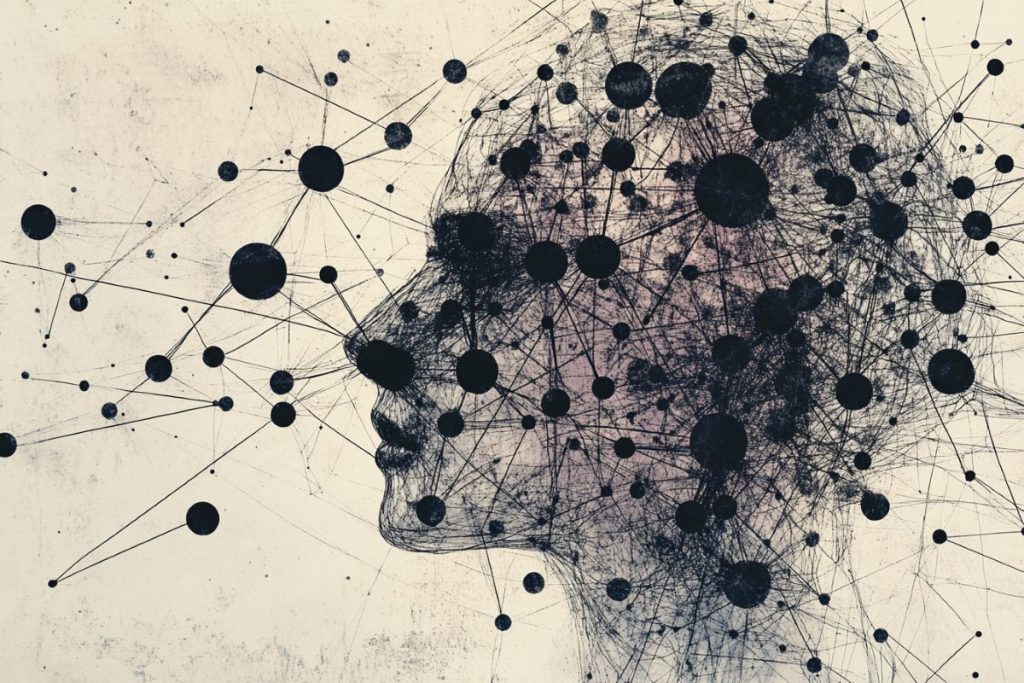15 Key Motives Drive Human Behavior – Neuroscience News

Summary: Researchers analyzed human motivation from an evolutionary perspective, identifying 15 key motives that drive behavior. These motives, grouped into five categories—environmental, physiological, reproductive, psychological, and social—reflect adaptations that helped early humans survive.The study used network analysis of survey responses to reveal how these motives interconnect and influence one another. Notably, Status and Play emerged as central to motivational structures, facilitating resource access and skill development.Findings also showed age and gender differences in motivational priorities, with younger individuals focusing on Status and Play, while older adults prioritize Comfort and Fear. The results have broad applications in marketing, AI, and mental health, helping tailor strategies to different motivational needs.Key Facts:Source; HSEThe question of what motivates human behaviour has long intrigued psychologists. Various approaches are used to assess these underlying motives. The most well-known theory is Abraham Maslow’s hierarchy of needs, introduced in the mid-20th century.However, most approaches emphasise the social aspects of motivation while overlooking its evolutionary underpinnings. A group of researchers at HSE University and the London School of Hygiene and Tropical Medicine proposed analysing human behaviour motives from an evolutionary perspective.In the proposed framework, all motives are viewed as evolutionary adaptations that enhanced early humans’ ability to survive in their environment and continue to influence behaviour today.The scientists proceed from the premise that if certain evolutionary mechanisms once triggered specific behaviours, the underlying motives can be identified using standard psychometric techniques. To accomplish this, the study authors conducted an online survey with over 500 participants who were asked to rate 150 statements concerning their everyday preferences, fears, desires, and social aspirations.The statements were based on previously identified motives from other studies reflecting physical, reproductive, or social needs, such as ‘I enjoy going on roller coasters,’ ‘Eating is less important to me than it seems to be for most people,’ and ‘I spend a lot of time staying in touch with my friends,’ among others.Using network analysis, the researchers identified stable clusters of motives. The study found that human behaviour is driven by 15 key motives, which can be grouped into five broad categories: environmental (Hoard, Create), physiological (Fear, Disgust, Hunger, Comfort), reproductive (Lust, Attract, Love, Nurture), psychological (Curiosity, Play), and social (Affiliate, Status, Justice). The researchers also identified functional relationships between motives, contributing to a deeper understanding of motivational structures. For example, Justice has strong ties to Nurture and Curiosity, suggesting that it is a function of both concern for the welfare of others and a need to keep abreast of where anti-social behaviours might be occurring. Interestingly, the motives of Play and Status emerged as pivotal points of connectivity, interacting extensively with other nodes, suggesting they influence a broad range of related motives.Status appears to be important as it facilitates the attainment of other goals by providing access to resources that enhance the chances of success in life, including attracting a partner.Maintaining status involves hoarding resources, fearing the loss of these resources, and effectively using them in various situations. The motive of play, in turn, helps develop the skills needed to maintain status and adapt to changing circumstances.Albina Gallyamova‘Using network-based psychometric techniques, we were able to observe how motives interrelate. For instance, the motives of Love and Nurture are positioned close to each other in the network, which makes sense from an evolutionary perspective, as caring for offspring enhances their chances of survival.Conversely, the motives of Fear and Curiosity often have opposing effects. Fear keeps us away from danger, but when excessive, it can suppress curiosity, which fosters knowledge and innovation,’ explains Albina Gallyamova, Junior Research Fellow at the HSE Centre for Sociocultural Research.The study also revealed age- and gender-related variations in the significance of different motives. Women tend to show a greater interest in the motives of Nurture and Comfort, while men are more likely to focus on the motives of Status and Attraction. The researchers note that these differences are linked to the traditional roles men and women played in our evolutionary past. Age also contributes to shaping our priorities. Younger individuals tend to be more focused on Status and Play, while as people age, Fear and concern for Comfort become more prominent. ‘These changes reflect different life stages: initially, we strive to secure our place in society, and later, we focus on safety and survival,’ adds Gallyamova.The study findings can be valuable in various fields, ranging from marketing to IT. For example, in advertising, understanding the motives of different social groups allows for more precise and effective communication.Youth focused on Status and Play are more likely to respond to incentives related to prestige and entertainment, while a more mature audience prioritises safety, reliability, and comfort.In the field of AI, understanding evolutionary motives enables a more human-centred approach, offering gamification and social interaction for younger users, while emphasising convenience and simplicity for the older generation.In therapy, understanding the underlying motives can help provide a more accurate response to the client’s needs. For example, addressing anxiety can take into account the evolutionary mechanism of avoiding danger and help strike a balance between safety and curiosity. ‘Ultimately, understanding the evolutionary motives that drive our behaviour enables us to create solutions that make people’s lives more comfortable, safer, and more interesting,’ explains Gallyamova.Author: Liudmila MezentsevaSource: HSEContact: Liudmila Mezentseva – HSEImage: The image is credited to Neuroscience NewsOriginal Research: Open access.“Network psychometric-based identification and structural analysis of a set of evolved human motives” by Albina Gallyamova et al. Personality and Individual DifferencesAbstractNetwork psychometric-based identification and structural analysis of a set of evolved human motivesEstablishing a limited set of motives characteristic of the human species has been a goal in psychology since the beginning of the discipline. This paper uses a network-based analysis of previously published psychometric data to establish the existence of a pre-defined set of human motives.The set was derived by using evolutionary theory to identify what sorts of goals humans need to achieve to survive and reproduce in the niche our species evolved to fill.The analysis reported here is based on responses obtained from an on-line sample of 510 representative residents of the United Kingdom to 150 items.Analysis shows that all fifteen of the identified motives can be isolated, that they show expected relationships to one another (based on common functionality), and that differences in attentiveness to motives by gender reflect traditional gender-based role-play during human evolution, while differences by age are consistent with expectations from life history theory.The reduced set of 45 items identified by a genetic algorithm-based analysis could form the basis of a psychometric scale.Knowing the set of motives behind goal-directed behaviour should prove a significant boon to a wide variety of psychological applications, including human relations, educational strategies, marketing and behaviour change.Your email address will not be published. Required fields are marked *Comment *Name * Email * Website Notify me of follow-up comments by email. Notify me of new posts by email. Neuroscience News Sitemap Neuroscience Graduate and Undergraduate Programs Free Neuroscience MOOCs About Contact Us Privacy Policy Submit Neuroscience News Subscribe for EmailsNeuroscience Research Psychology News Brain Cancer Research Alzheimer’s Disease Parkinson’s News Autism / ASD News Neurotechnology News Artificial Intelligence News Robotics NewsNeuroscience News is an online science magazine offering free to read research articles about neuroscience, neurology, psychology, artificial intelligence, neurotechnology, robotics, deep learning, neurosurgery, mental health and more.
Source: https://neurosciencenews.com/human-behavior-motives-psychology-28435/





